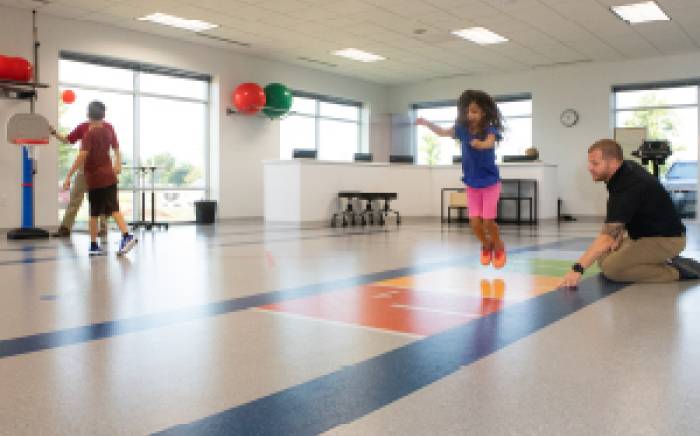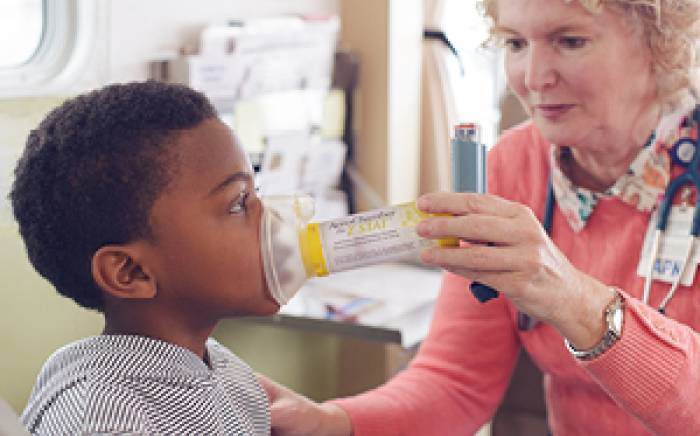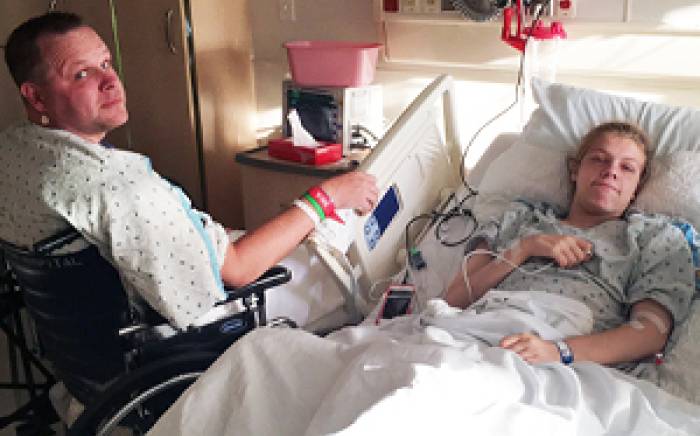By Pam McGrath
 Even before entering medical school, Holly Hoefgen, MD, Washington University pediatric and adolescent gynecologist at St. Louis Children’s Hospital, was interested in the pediatric population. During the course of her schooling, she focused her training and choices toward a career in pediatrics. However, during her medical school rotation in obstetrics/gynecology, she suddenly realized a love for women’s health care, while discovering an interest in surgical procedures and being in the operating room.
Even before entering medical school, Holly Hoefgen, MD, Washington University pediatric and adolescent gynecologist at St. Louis Children’s Hospital, was interested in the pediatric population. During the course of her schooling, she focused her training and choices toward a career in pediatrics. However, during her medical school rotation in obstetrics/gynecology, she suddenly realized a love for women’s health care, while discovering an interest in surgical procedures and being in the operating room.
“I found myself in a unique position because I loved the younger population, but also was drawn to a different and unexpected specialty of obstetrics and gynecology,” she says. “After some of my mentors suggested the specialty of pediatric and adolescent gynecology, I realized it was a wonderful meld of the things I wanted to do. It combined the younger population with women’s health care.”
Specialized training in pediatric and adolescent gynecology allows physicians to provide gynecologic care to patients from birth to later adolescence and into their young adulthood. Younger patients are seen for conditions such as vulvovaginal itching, irritation or dermatologic changes, as well as labial adhesions and early puberty. Adolescent patients may have irregularities in their menstrual cycle or need sexual health or contraception education.
“We see patients for diagnosis and management of congenital alterations in their female structures. We also treat individuals with injuries to the genital region or complications with their ovaries such as cysts or torsion,” says Dr. Hoefgen. “We fill a gap in medicine for pediatricians who are not as comfortable with women’s health care and many adult gynecologists who may not be comfortable with younger patients.”
Dr. Hoefgen received her medical degree and completed her residency in obstetrics and gynecology at Southern Illinois University School of Medicine, Springfield, and her pediatric and adolescent gynecology fellowship at Washington University School of Medicine. After completing her training, she practiced at Cincinnati Children’s Hospital for three years before returning to St. Louis Children’s Hospital and Washington University.
“During my training at Washington University, I worked with Dr. Diane Merritt, chief of pediatric and adolescent gynecology. She was an excellent mentor and inspired my passion for the field of pediatric gynecology,” says Dr. Hoefgen. “Being able to return here to work with my mentor and utilize the resources of such a great academic institution to expand our specialized field of pediatric gynecology was a wonderful opportunity.”
She adds, “The variety of general pediatric gynecology is what makes it such a wonderful field. With some of my youngest patients, girls who are less than 5 years old, I need to come up with creative ways to talk to them and examine them in areas they are not used to having examined. My adolescent patients might need my help dealing with menstrual cycles or contraception, and I must balance their medical needs with their growing desire for autonomy and confidentiality. But I also will see patients with a rare diagnosis very specific to our specialty and not something every gynecologist gets to see.”
Adding to Dr. Hoefgen’s interest in pediatric gynecology is the ability to apply her skills to an increasing number of specializations within the field, among them fertility preservation, caring for patients with differences of sexual development, and the growing field of transgender care.
“For example, a young girl with cancer may undergo treatments such as chemotherapy or bone marrow transplant that put her ovaries at risk for infertility in the future,” explains Dr. Hoefgen. “Although the cancer treatments are most important for getting the patient through her underlying disease, the goal of the fertility preservation program at St. Louis Children’s Hospital is to meet with these young patients and their families to discuss the risks and reasonable options to preserve fertility.”
For teenage or young adult patients who have gone through puberty, there is the option of harvesting eggs from their ovaries. These are frozen and stored until the patient is ready to use them later in life. For younger patients who have not gone through puberty, it is possible to take one whole ovary or strips of the ovarian cortex and freeze it (cryopreservation). When the patient has completed her cancer treatments and is ready to have children, part of that ovary is placed back into her body for the purpose of fertility. Within a few months, the young woman should regain her hormone function and be able to attempt pregnancy.
“Research in the next several years will help us improve the longevity and outcome of tissue transplants, as well as discover new and innovative ways to use the ovarian tissue that doesn’t require a tissue transplant. This is very exciting,” says Dr. Hoefgen. “The goal always will be making sure young girls and their families are informed of the risk and know that options may exist. However, it is also important to be realistic and know that not every solution is available to all patients. There are other ways our patients can have families, so we talk about those alternative options for becoming a parent as well.”
For more information, or to speak with Dr. Hoefgen, call Children’s Direct at 800.678.HELP (4357).









